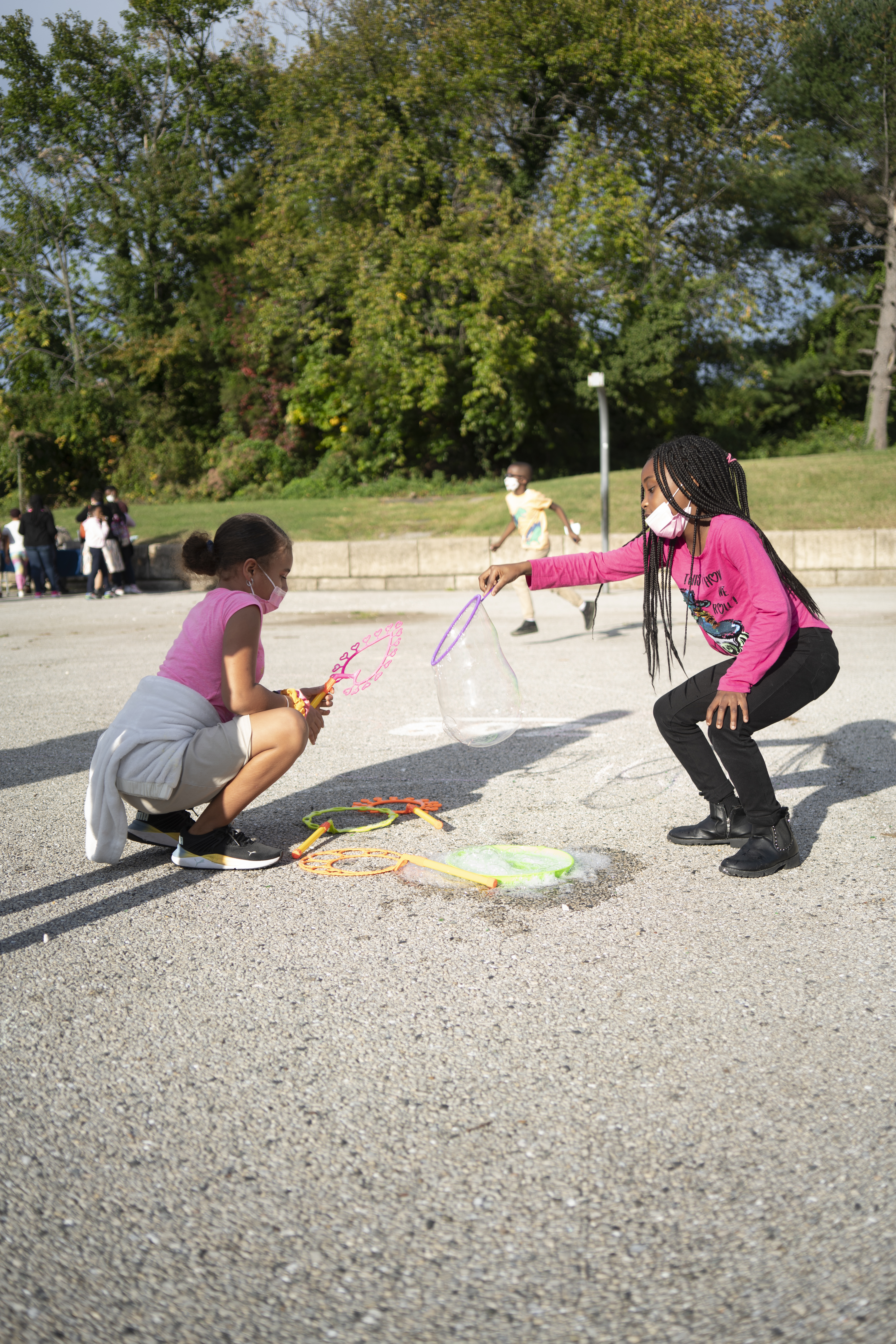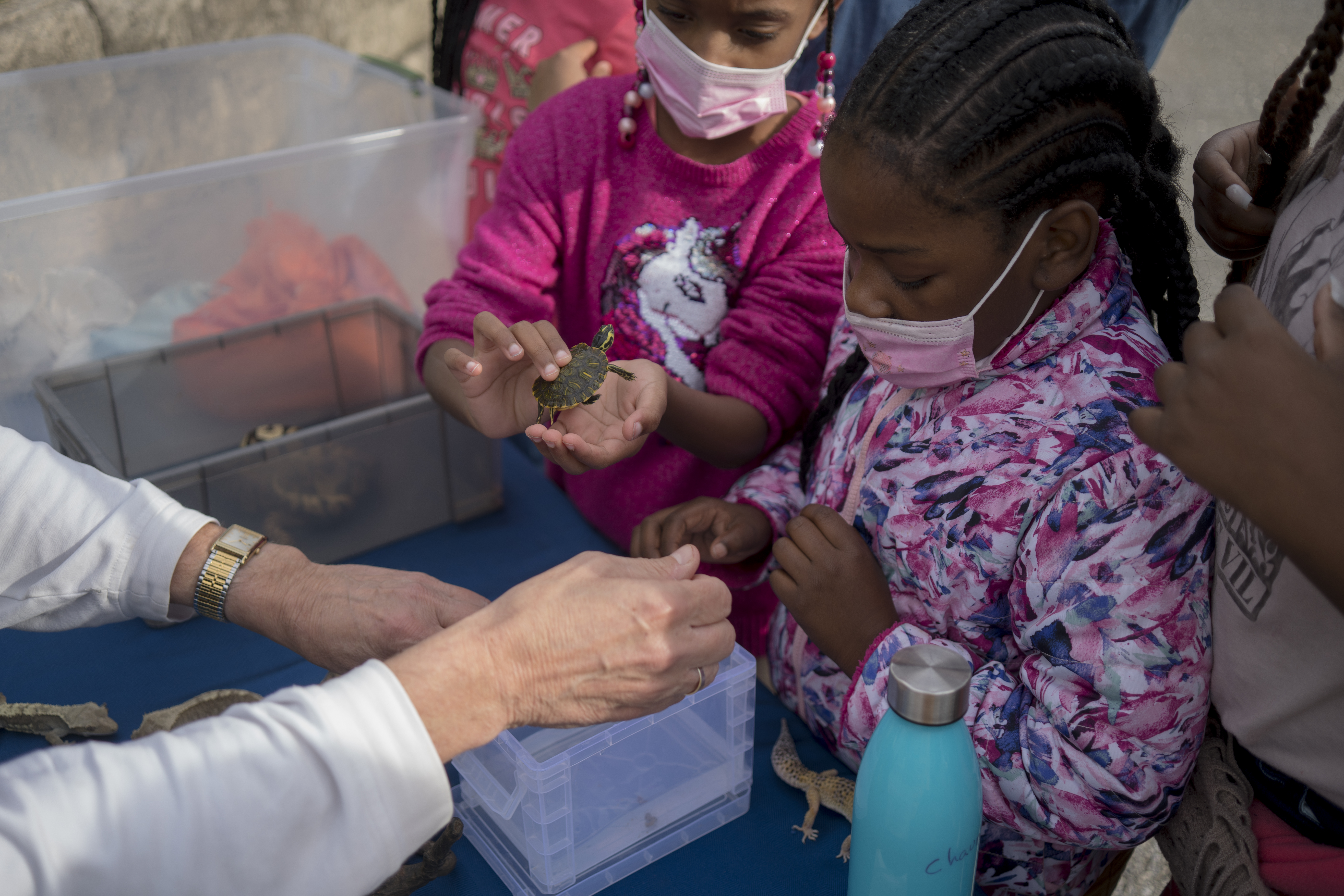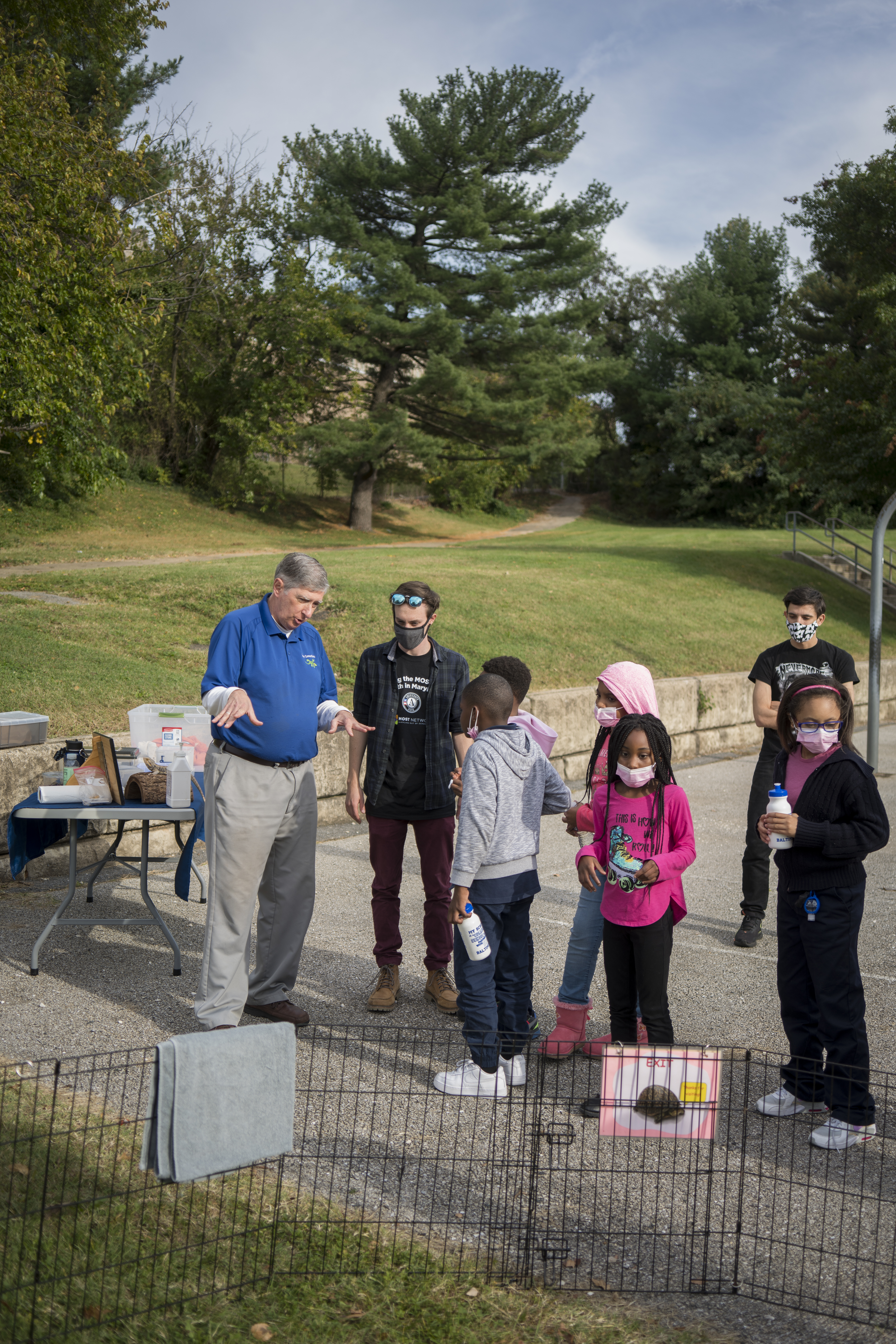When a shooting that injured four children ripped through an East Baltimore neighborhood in September, Mayor Brandon Scott took to social media. “This is entirely unacceptable,” he tweeted. “Our children should be focused on completing homework and preparing for another school day rather than petty beefs that cause harm and perpetuate pain.”
Six months earlier, after a spate of shootings in March left several children injured and two killed, the mayor made curbing violence against children a key component of his crime plan. At the time, Scott was still formulating his plan; he rode into office promising a public health approach to stemming a six-year surge of violence. But here he was again, in September, condemning violence against kids.
This time around, he could point to a citywide initiative to help save young lives by engaging every city agency, particularly the one charged with maintaining Baltimore’s safe public spaces.
The four children shot in September ranged in age from 12 to 17. It was yet another incident where kids were either the target of gun violence or had the misfortune of being in a place where gunfire was being volleyed. Since the beginning of 2021, eight children have been shot and killed in Baltimore. In 2020, 11 children were killed by gunfire. In 2019, one of the deadliest years on record, 14 children died of gunshot wounds.
The shootings in Baltimore coincide with an increase in children being shot across the country, a trend that hasn’t abated. In 2020, more than 1,300 children were killed by a firearm, an increase of almost 400 deaths compared to 2019. Violence against children has increased again in 2021: As of November 4, more than 3,400 children had been injured by a firearm in 2021, and 1,246 children had been killed by guns.
In Baltimore, city leaders are seeking solutions that might seem less than intuitive. In summer 2021, Scott sought out more recreational opportunities for children. Scott increased the Department of Recreation and Parks budget to $59.8 million, up from $58.1 million in 2020. The idea is that by offering young people more activities and safe places to hang out during the afternoon and evening, they’re less likely to encounter violence.
Ellie Mitchell, the director of the Maryland Out of School Time Network, welcomed Scott’s investment, but said it’s not enough. “If you want to say a city’s budget reflects its priorities, you would say our priorities are police enforcement,” she said, referring to the Baltimore Police Department’s $500 million-plus budget.
In July, Scott announced that the Family League of Baltimore, a quasi-public agency established to offer financial assistance to children and families, was donating an additional $1 million to support 43 community recreation centers and after-school programs.



The Family League’s money, funneled through the Baltimore Recreation and Parks Department, allowed summer programming to extend into the first week of September, just as school started. That time is historically one of the more dangerous periods in Baltimore’s calendar year; it’s an especially dangerous time for children.
The money also allowed the programs to reach more kids. “The grant was a game-changer,” said Dan Carpenter, chief of programming for the Recreation and Parks Department.
Two programs in particular were designed to address violence. The first, Adolescent Recreation Social and Emotional Skill Building, uses activities and games to teach social and emotional life skills. Children role-play scenarios where they need to show empathy, self-awareness, and self-regulation. “They gain awareness of those skills and they get to see others practicing the skills,” said program founder Jacqueline Stevenson.
For seven weeks, around 30 kids attended weekly two-hour sessions. The progress was slow at times, but there were breakthroughs. One participant struggled with shyness, Stevenson said, “but after working on her self-awareness and self-esteem, her mother just told me she opened up and began participating.”
For the second program, Bobby Holmes wanted to scale the response to violence in the city by activating Baltimore’s youth. Through his company Son of a Dream, Holmes ran a conflict resolution workshop, which helped children ages 8 through 18 learn how to resolve and mediate conflicts before they turn deadly. “Community violence and gun violence impacts everyone,” Holmes said. “We help youth understand [that] you too can take a role in opposing gun violence, and you too have a responsibility to do something.”
Program leaders can often spot signs of trauma or connections with gangs or groups associated with violence. “Not all the programs articulate themselves as violence reduction or intervention, but they often can intervene before violence erupts,” Mitchell said.
Both programs have been paused during the school year; the funding expired just as the summer ended. In order to return next summer, these programs will need another injection of cash from the city.
Carpenter agreed that his parks department has to be a part of the city’s solution to violence. “We should all have something that brings us joy,” he added, “and we should all have a safe place to go to experience that.”

